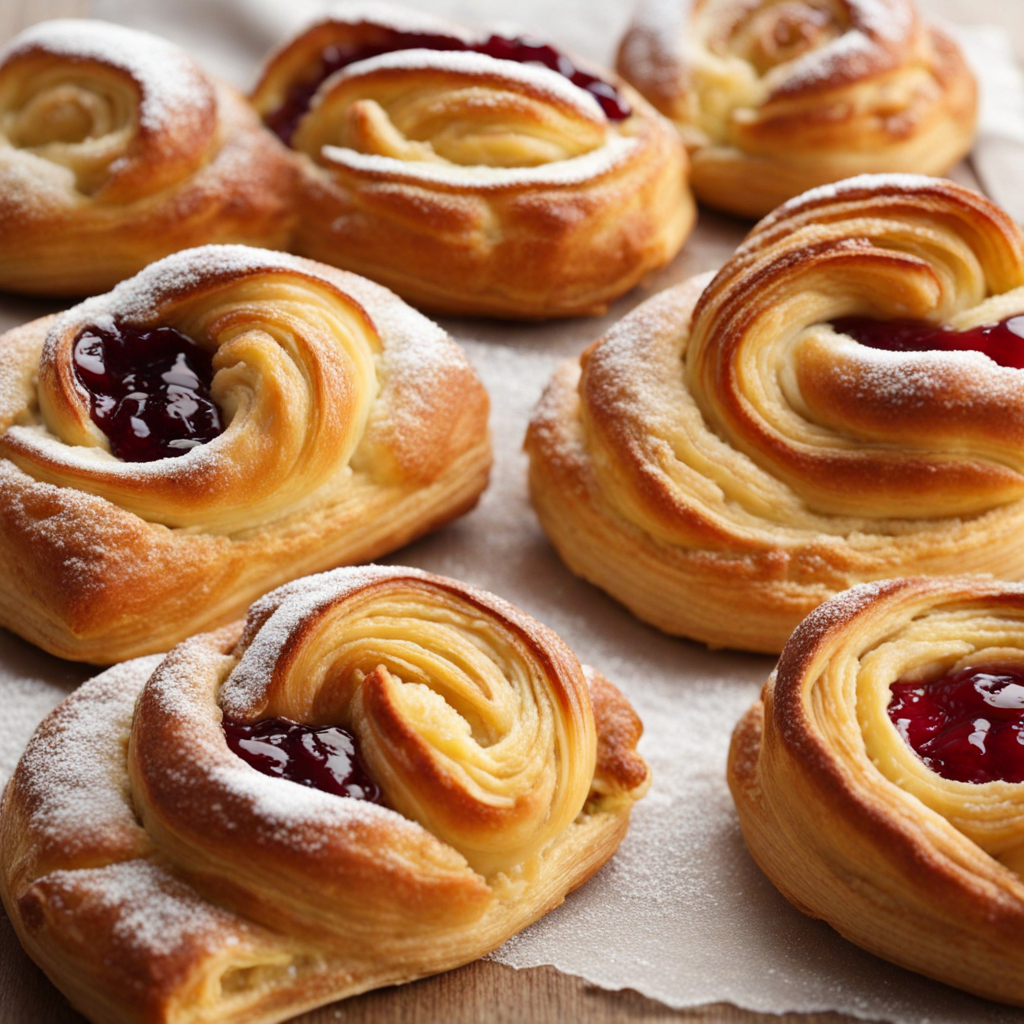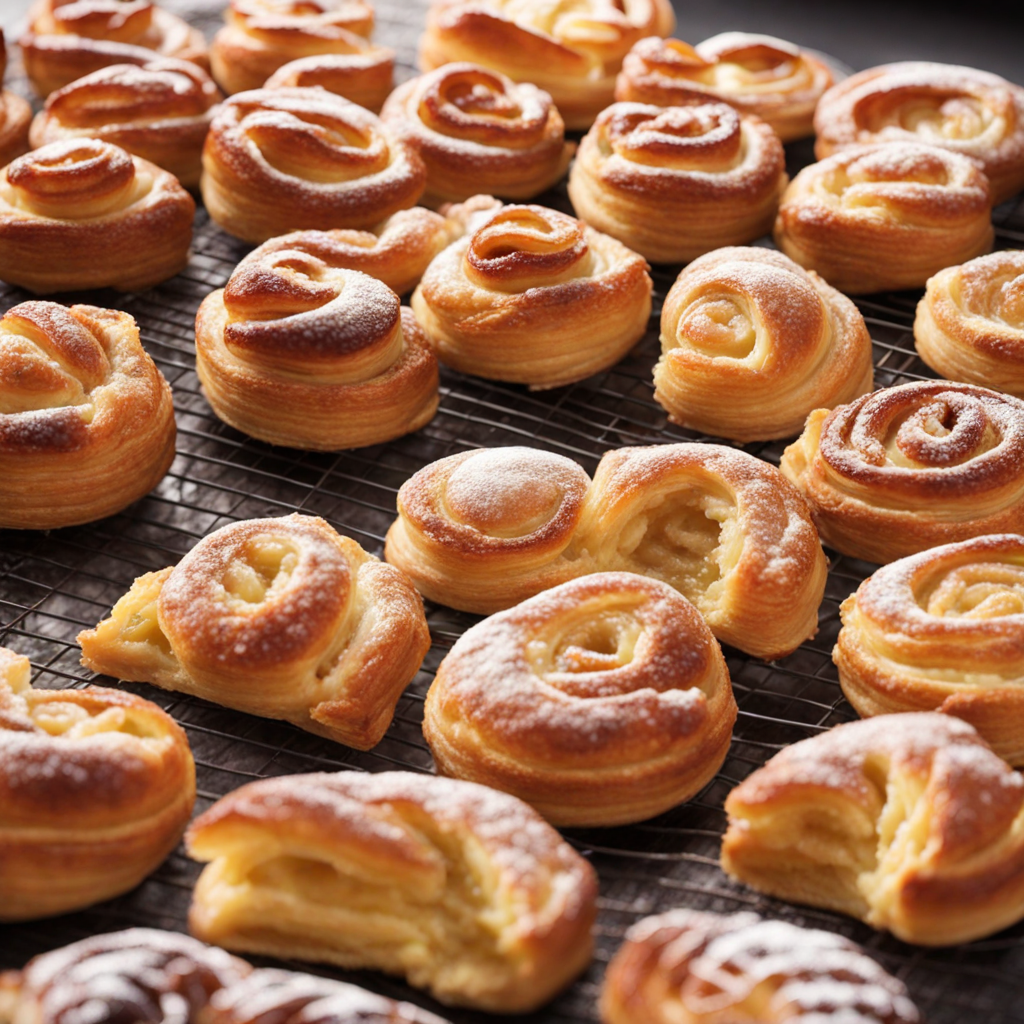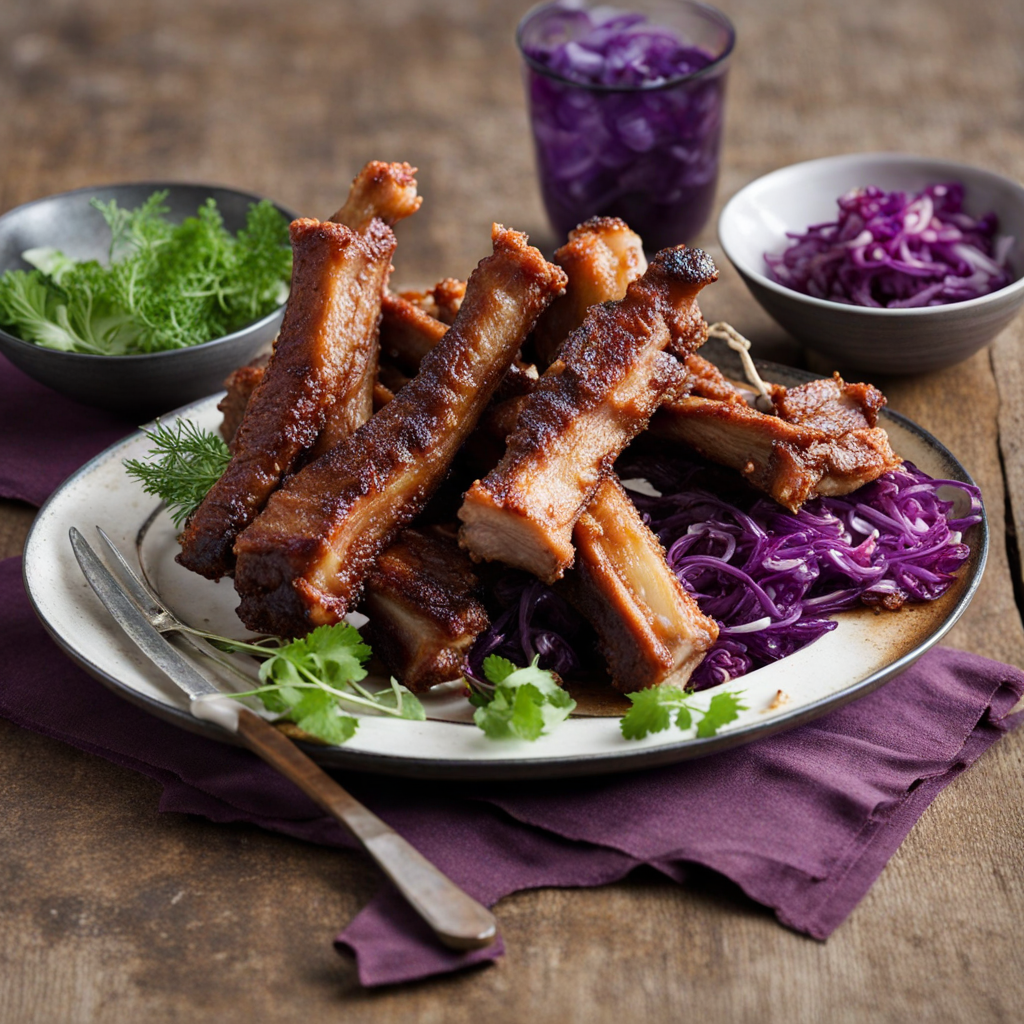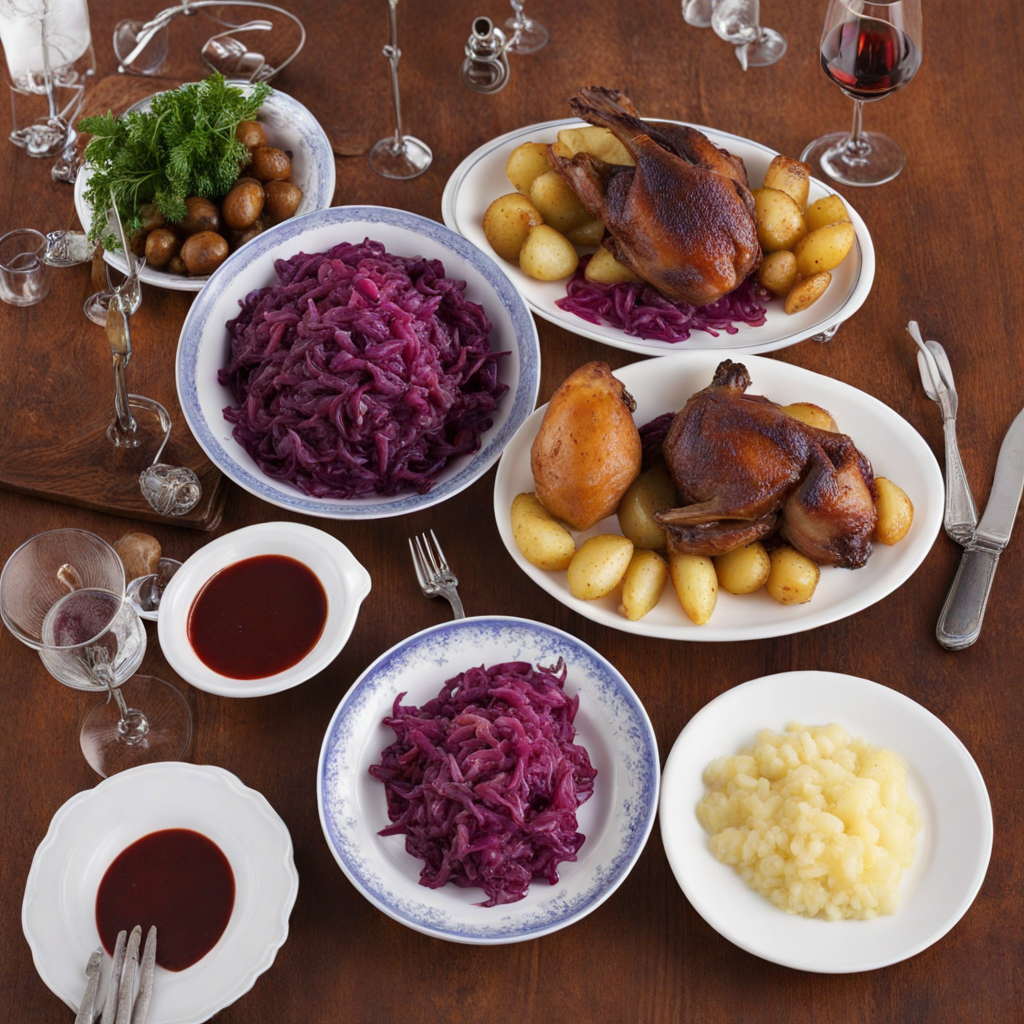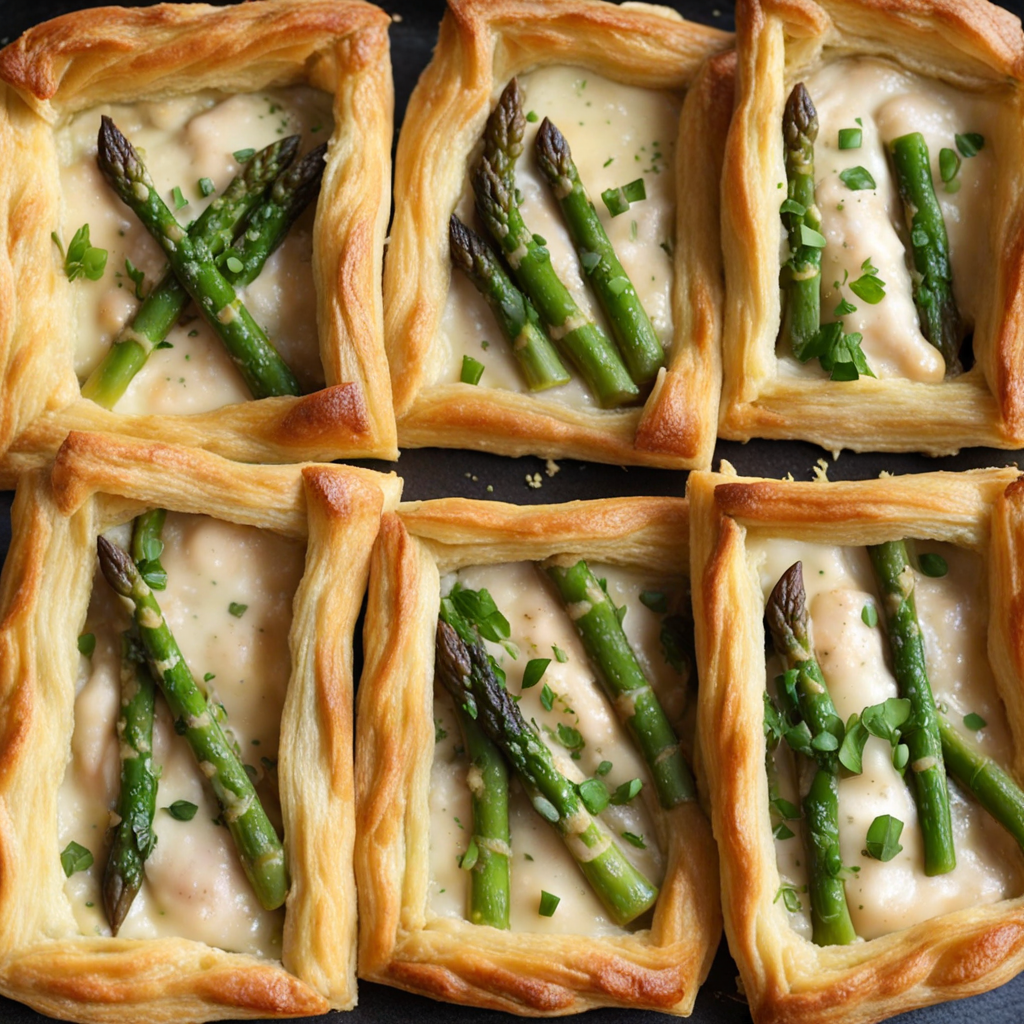Danish Pastry
Danish Pastry is a delightful treat that originates from Denmark, celebrated for its rich, flaky texture and decadent fillings. The pastry itself is made from a laminated dough, similar to that used in croissants, which involves folding layers of butter between sheets of dough to create a light and airy consistency. This meticulous process results in a pastry that is not only tender but also has a satisfying crunch on the outside, inviting you to take a bite and explore its layered nature. What makes Danish Pastry truly unique is its versatility in fillings and toppings. Traditional options include almond paste, custard, fruit preserves, or cream cheese, each bringing its own distinct flavor profile to the pastry. The combination of sweet and sometimes tangy fillings, paired with a light glaze or a sprinkle of powdered sugar, elevates the overall experience, making each bite a delightful surprise. Whether enjoyed as a breakfast item or a sweet afternoon snack, Danish Pastry offers a burst of flavor that can satisfy any sweet tooth. Beyond just its flavor, the presentation of Danish Pastry is also noteworthy. Often shaped into spirals, rings, or pinwheels, these pastries are visually appealing and can be adorned with icing or sliced almonds for an extra touch. This attention to detail, both in taste and appearance, reflects the Danish commitment to quality and craftsmanship in their baked goods. Discovering Danish Pastry is not just about tasting a new food; it’s about indulging in a cultural experience that celebrates the artistry of baking.
How It Became This Dish
The Sweet Legacy of Wienerbrød: A Journey Through History Wienerbrød, commonly referred to as Danish pastry, is a delightful and intricate pastry that has captured the hearts—and palates—of people around the world. Originating in Denmark, this culinary gem is not only a testament to the artistry of pastry-making but also a reflection of the cultural exchanges that have shaped its development. To understand Wienerbrød fully, one must delve into its origins, cultural significance, and the evolution it has experienced over the centuries. #### Origins: A Culinary Crossroads The roots of Wienerbrød can be traced back to the early 19th century in Denmark. The term "Wienerbrød" translates to "Viennese bread," hinting at its connection to Austria. The story begins with the arrival of Viennese bakers in Denmark around the 1840s. They brought with them a technique known as “lamination,” which involves folding layers of dough and butter to create a flaky texture. This method was originally used in making croissants and puff pastries. This introduction of Austrian baking techniques coincided with a burgeoning interest in pastry-making among Danish bakers. They quickly adapted and incorporated these methods into their own culinary practices, leading to the creation of what we now recognize as Wienerbrød. The Danish bakers embraced the concept and began experimenting with local ingredients, resulting in a pastry that was rich, buttery, and uniquely Scandinavian. #### Cultural Significance: A Symbol of Hospitality Wienerbrød quickly transcended its origins to become a staple in Danish culture. It is more than just a pastry; it is a symbol of hospitality and celebration in Denmark. Traditionally, Wienerbrød is served during special occasions, such as birthdays, weddings, and holidays, highlighting its role in social gatherings and communal feasting. The pastry's intricate shapes and fillings are also reflective of Danish craftsmanship and attention to detail. Common fillings include almond paste, fruit preserves, and custards, often adorned with icing or glazes. This variety not only showcases the creativity of Danish bakers but also emphasizes the importance of flavor and presentation in Danish culinary traditions. Wienerbrød’s cultural significance extends beyond the kitchen. The pastry has become a part of the national identity, and it is often associated with the concept of "hygge," a Danish term that embodies coziness and comfort. Enjoying a slice of Wienerbrød with a cup of coffee becomes an experience of warmth and togetherness, embodying the Danish way of life. #### Development Over Time: From Local Delight to Global Phenomenon As the 19th century progressed, Wienerbrød gained popularity beyond the borders of Denmark. Danish immigrants carried their beloved pastry to the United States and other countries during the waves of migration in the late 19th and early 20th centuries. In America, Wienerbrød evolved further, adapting to local tastes and ingredients, while still retaining its core identity. Bakeries across the United States began to offer their versions of the pastry, often incorporating cream cheese or cinnamon, leading to a delightful fusion of flavors. In Denmark, the 20th century saw the rise of industrial baking, which transformed the way Wienerbrød was produced. While traditional methods persisted in artisan bakeries, mass production allowed for greater accessibility. This shift led to the creation of new varieties and flavors, making Wienerbrød a ubiquitous presence in Danish bakeries. The pastry became a beloved everyday treat, enjoyed by people from all walks of life. The global popularity of Wienerbrød continued to soar, particularly in the late 20th and early 21st centuries. With the rise of the culinary arts and the increasing interest in international cuisine, Danish pastry found a place in the hearts of food enthusiasts worldwide. Cookbooks and baking shows began to feature Wienerbrød, showcasing its delicate layers and artistic potential. Home bakers took to the challenge of creating their own versions, experimenting with fillings and designs. #### Wienerbrød Today: A Culinary Staple Today, Wienerbrød is celebrated as a quintessential part of Danish cuisine and has made its mark on the global culinary stage. In Denmark, it is customary to enjoy Wienerbrød during “kaffehygge,” a concept that combines coffee and coziness, where friends and family gather to share stories and pastries. The pastry has also become a symbol of Danish craftsmanship, with many bakeries taking pride in their artisanal methods and traditional recipes. The versatility of Wienerbrød is one of its most appealing traits. It can be found in various forms, from classic “spandauer” filled with custard and topped with icing to more elaborate creations featuring seasonal fruits or chocolate. The pastry has also inspired countless adaptations, with modern bakers experimenting with flavors such as matcha, salted caramel, and even savory variants. As concerns about health and sustainability grow, some bakers are exploring alternative ingredients, offering gluten-free or vegan versions of Wienerbrød. This adaptability ensures that the pastry remains relevant in a changing culinary landscape while still honoring its rich heritage. #### Conclusion: A Timeless Tradition Wienerbrød is more than just a pastry; it is a reflection of a rich history that intertwines cultures and showcases the evolution of culinary practices. From its origins in the Viennese baking tradition to its status as a symbol of Danish hospitality, Wienerbrød has journeyed through time, adapting to the tastes and preferences of different cultures while retaining its quintessential charm. As we savor a piece of Wienerbrød today—whether in a cozy café in Copenhagen or a bustling bakery in New York City—we are not just indulging in a sweet treat; we are partaking in a shared history that celebrates craftsmanship, creativity, and the joy of coming together over food. In every flaky layer and delectable filling, Wienerbrød continues to tell the story of its past while inviting us to create new memories around the table.
You may like
Discover local flavors from Denmark


